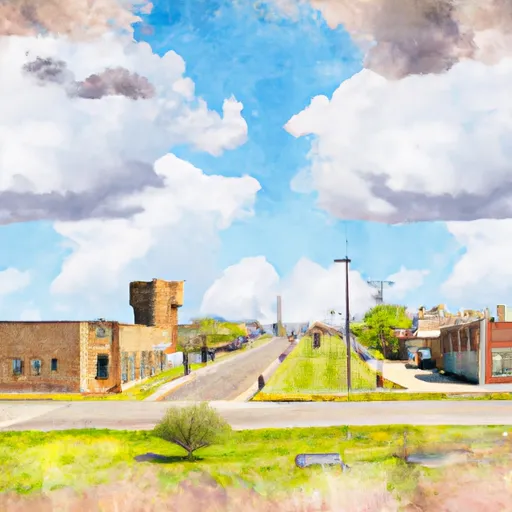-
 Snoflo Premium
Snoflo Premium
Get unlimited access to all our content
With no Ad interruptions! - Start Your Free Trial Login with existing account
Fort-Sill
Eden Index
Climate
9.7
•
Recreation
4.2
•
Community
•
Safeguard
5.4/10

Fort Sill is a United States Army installation located in Lawton, Oklahoma. The climate in Fort Sill is classified as humid subtropical with hot summers and mild winters. The hydrology constituents at Fort Sill include several small creeks, ponds, and lakes that are used for recreational activities, such as fishing and boating. Outdoor recreation opportunities at Fort Sill include hiking, camping, hunting, and golfing. The installation also has a number of recreational facilities, including a fitness center, swimming pool, and multiple sports fields. The nearby Wichita Mountains Wildlife Refuge offers additional opportunities for outdoor adventuring.
What is the Eden Index?
The Snoflo Eden Index serves as a comprehensive rating system for regions, evaluating their desirability through a holistic assessment of climate health, outdoor recreation opportunities, and natural disaster risk, acknowledging the profound impact of these factors on livability and well-being.
Climate Health Indicator (CHI): 9.7
Fort-Sill receives approximately
787mm of rain per year,
with humidity levels near 79%
and air temperatures averaging around
16°C.
Fort-Sill has a plant hardyness factor of
7, meaning
plants and agriculture in this region tend to thrive during the non-winter months.
By considering the ideal temperature range, reliable water supplies, clean air, and stable seasonal rain or snowpacks, the Climate Health Indicator (CHI) underscores the significance of a healthy climate as the foundation for quality living.
A healthy climate is paramount for ensuring a high quality of life and livability in a region, fostering both physical well-being and environmental harmony. This can be characterized by ideal temperatures, reliable access to water supplies, clean air, and consistent seasonal rain or snowpacks.
Weather Forecast
Streamflow Conditions
Red-Lake Texoma
Area Rivers
Red-Lake Texoma
Snowpack Depths
Red-Lake Texoma
Reservoir Storage Capacity
Red-Lake Texoma
Groundwater Levels
Recreational Opportunity Index (ROI): 4.2
The Recreational Opportunity Index (ROI) recognizes the value of outdoor recreational options, such as parks, hiking trails, camping sites, and fishing spots, while acknowledging that climate plays a pivotal role in ensuring the comfort and consistency of these experiences.
Access to outdoor recreational opportunities, encompassing activities such as parks, hiking, camping, and fishing, is crucial for overall well-being, and the climate plays a pivotal role in enabling and enhancing these experiences, ensuring that individuals can engage in nature-based activities comfortably and consistently.
Camping Areas
| Campground | Campsites | Reservations | Toilets | Showers | Elevation |
|---|---|---|---|---|---|
| East Side - Lake Lawtonka | 35 | 1,365 ft | |||
| Doris Campground - Wichita Mts NWR | None | 1,520 ft | |||
| Lake Arrowhead State Park | 71 | 952 ft | |||
| Edgewater Park - Lawton | None | 1,246 ft | |||
| Fort Cobb - Area 5 | None | 1,380 ft | |||
| Randlett Park | None | 1,192 ft | |||
| Medicine Creek RV Military - Fort Sill | None | 1,138 ft | |||
| Collier Landing City | None | 1,241 ft | |||
| Robinsons Landing - Lake Lawtonka | None | 1,355 ft | |||
| Lake Elmer Thomas Military - Fort Sill | None | 1,394 ft |
Nearby Fishing
Nearby Ski Areas
Catastrophe Safeguard Index (CSI):
The Catastrophe Safeguard Index (CSI) recognizes that natural disaster risk, encompassing floods, fires, hurricanes, and tornadoes, can drastically affect safety and the overall appeal of an area.
The level of natural disaster risk in a region significantly affects safety and the overall livability, with climate change amplifying these risks by potentially increasing the frequency and intensity of events like floods, fires, hurricanes, and tornadoes, thereby posing substantial challenges to community resilience and well-being.
Community Resilience Indicator (CRI):
The Community Resilience Indicator (CRI) recognizes that education, healthcare, and socioeconomics are crucial to the well-being of a region. The CRI acknowledges the profound impact of these elements on residents' overall quality of life. By evaluating educational resources, healthcare accessibility, and economic inclusivity, the index captures the essential aspects that contribute to a thriving community, fostering resident satisfaction, equity, and social cohesion.

